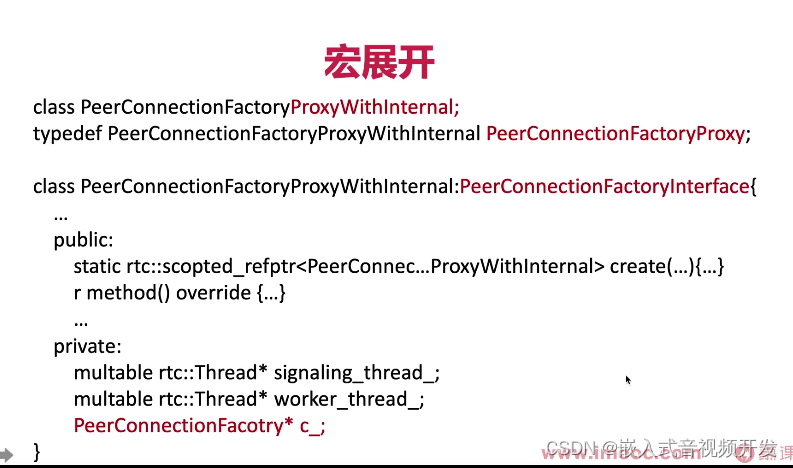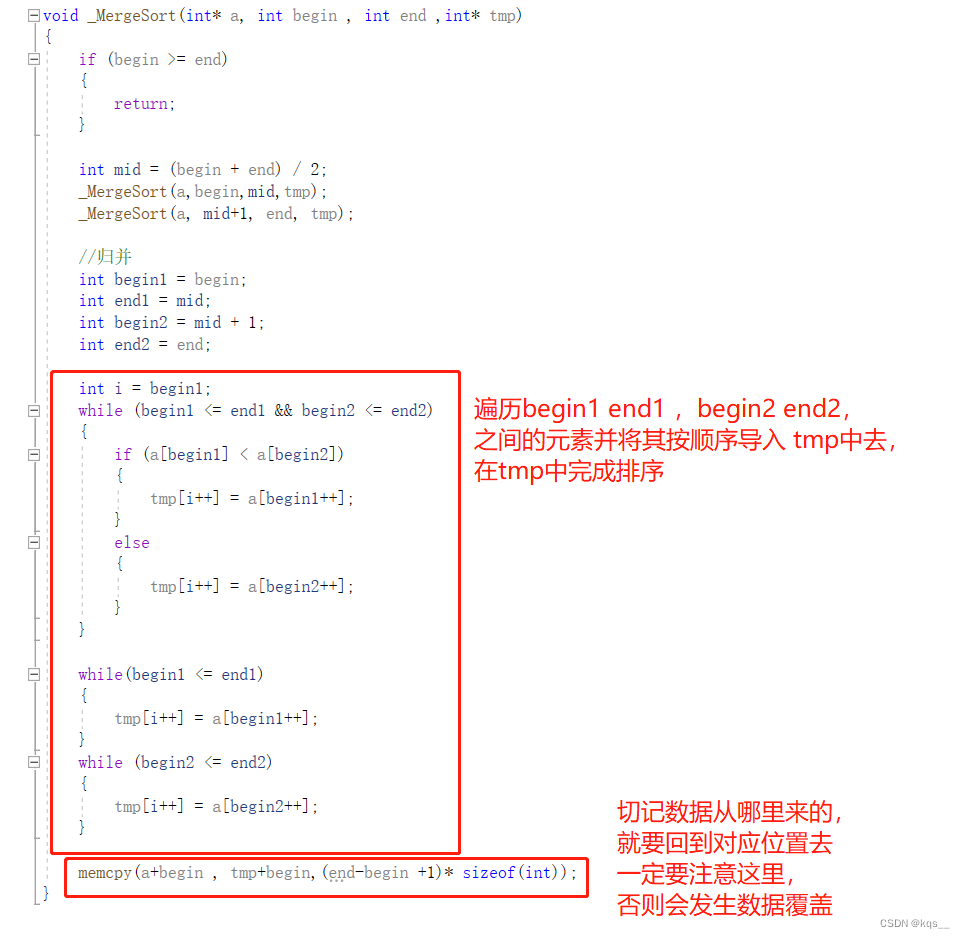一、参考资料
课件:10_Transformer_1.pdf
视频:Transformer模型(1/2): 剥离RNN,保留Attention
二、Attention without RNN
Attention模型可以看到全局的信息。
本章节以 Seq2Seq( (encoder + decoder)) 模型为例,介绍Attention机制。
1. Keys&Values&Query定义
-
Encoder’s inputs are vectors x 1 , x 2 , ⋯ , x m \mathbf{x}_1,\mathbf{x}_2,\cdots,\mathbf{x}_m x1,x2,⋯,xm.
-
Decoder’s inputs are vectors x 1 ′ , x 2 ′ , ⋯ , x t ′ \color{red}{\mathbf{x}_1^{\prime}},\color{red}{\mathbf{x}_2^{\prime}},\cdots,\color{red}{\mathbf{x}_t^{\prime}} x1′,x2′,⋯,xt′.

-
K e y s \color{red}{Keys} Keys and V a l u e s \color {red}{Values} Values are based on encoder’s inputs x 1 , x 2 , ⋯ , x m \mathbf{x}_1,\mathbf{x}_2,\cdots,\mathbf{x}_m x1,x2,⋯,xm.
-
Q u e r i e s \color {red}{Queries} Queries are based on decoder’s inputs x 1 ′ , x 2 ′ , ⋯ , x t ′ \color{red}{\mathbf{x}_1^{\prime}},\color{red}{\mathbf{x}_2^{\prime}},\cdots,\color{red}{\mathbf{x}_t^{\prime}} x1′,x2′,⋯,xt′.
-
K e y s \color{red}{Keys} Keys: k : i = W K x i \mathbf{k}_{:i}=\mathbf{W}_K\mathbf{x}_i k:i=WKxi.
-
V a l u e s \color {red}{Values} Values: v : i = W V x i \mathbf{v}_{:i}=\mathbf{W}_V\mathbf{x}_i v:i=WVxi.
-
Q u e r y \color {red}{Query} Query: q : j = W Q x j ′ {\mathbf{q}_{:j}=\mathbf{W}_Q}{\mathbf{x}_j^{\prime}} q:j=WQxj′.


2. Attention机制的原理
2.1 Compute weights
α
:
1
=
S
o
f
t
m
a
x
(
K
T
q
:
1
)
∈
R
m
{\alpha_{:1}=\mathrm{Softmax}(\mathbb{K}^T{q_{:1}})\in\mathbb{R}^m}
α:1=Softmax(KTq:1)∈Rm

α
:
2
=
S
o
f
t
m
a
x
(
K
T
q
:
2
)
∈
R
m
{\alpha_{:2}=\mathrm{Softmax}(\mathbb{K}^T{q_{:2}})\in\mathbb{R}^m}
α:2=Softmax(KTq:2)∈Rm

2.2 Compute context vector
c
:
1
=
α
:
1
v
:
1
+
⋯
+
α
:
m
v
:
m
=
V
α
:
1
{\mathbf{c}_{:1}=\alpha_{:1}\mathbf{v}_{:1}+\cdots+\alpha_{:m}\mathbf{v}_{:m}=\mathbf{V}\mathbf{\alpha}_{:1}}
c:1=α:1v:1+⋯+α:mv:m=Vα:1

c
:
2
=
α
12
v
:
1
+
⋯
+
α
:
m
v
:
m
=
V
α
:
2
{c_{:2}=\alpha_{12}v_{:1}+\cdots+\alpha_{:m}v_{:m}=V\alpha_{:2}}
c:2=α12v:1+⋯+α:mv:m=Vα:2

c
:
j
=
α
1
j
v
:
1
+
⋯
+
α
m
j
v
:
m
=
V
α
:
j
{\mathrm{c}_{:j}}=\alpha_{1j}\mathbf{v}_{:1}+\cdots+\alpha_{mj}\mathbf{v}_{:m}=\mathbf{V}\mathbf{\alpha}_{:j}
c:j=α1jv:1+⋯+αmjv:m=Vα:j

2.3 Output of attention layer
-
C = [ c : 1 , c : 2 , c : 3 , ⋯ , c : t ] {C=[c_{:1},c_{:2},c_{:3},\cdots,c_{:t}]} C=[c:1,c:2,c:3,⋯,c:t].
-
c : j = V ⋅ S o f t m a x ( K T q : j ) {\mathrm{c}_{:j}=\mathrm{V}\cdot\mathrm{Softmax}(\mathrm{K}^T {\mathbf{q}_{:j}})} c:j=V⋅Softmax(KTq:j).
-
c : j \mathrm{c}_{:j} c:j is a function of X j ′ \mathbf{X}_j^{\prime} Xj′ and [ x 1 , ⋯ , x m ] [\mathbf{x}_1,\cdots,\mathbf{x}_m] [x1,⋯,xm].

2.4 Attention Layer
- Attention layer: C = A t t n ( X , X ′ ) \mathrm{C}=\mathrm{Attn}(\mathbf{X},\mathbf{X}^{\prime}) C=Attn(X,X′).
- Encoder’s inputs: X = [ x 1 , x 2 , ⋯ , x m ] \mathbf{X}=[\mathbf{x}_1,\mathbf{x}_2,\cdots,\mathbf{x}_m] X=[x1,x2,⋯,xm].
- Decoder’s inputs: X ′ = [ x 1 ′ , x 2 ′ , ⋯ , x t ′ ] \mathbf{X}^{\prime}=[x_1^{\prime},x_2^{\prime},\cdots,x_t^{\prime}] X′=[x1′,x2′,⋯,xt′].
- Parameters:
W
Q
,
W
K
,
W
V
\mathbf{W}_Q\textbf{, W}_K\textbf{, W}_V
WQ, WK, WV.

2.5 Machine Translation
本章节介绍Attention机制在Machine Translation机器翻译任务中的应用。将English翻译成German。


3. Attention最新研究
比标准Attention快197倍!Meta推出多头注意力机制“九头蛇”
Hydra Attention: Efficient Attention with Many Heads
三、Self-Attention without RNN
The Illustrated Transformer
Attention机制详解(二)——Self-Attention与Transformer
1. 引言
在介绍Self-Attention之前,先举了一个语义处理的例子:
“The animal didn’t cross the street because it was too tired.”
我们人很容易理解,后面的it是指animal,但是要怎么让机器能够把it和animal关联起来呢?

Self-attention就是在这种需求下产生的,如上图所示,我们应当有一个结构能够表达每个单词和其他每个单词的关系。
2. Self-Attention机制的原理
2.0 Keys&Values&Query定义
-
输入为 x 1 , x 2 , x 3 , . . , x m \color{red}{x_1, x_2, x_3,..,x_m} x1,x2,x3,..,xm。
-
Q u e r y \color{red}{Query} Query: q : i = W Q x i \mathbf{q}_{:i}=\mathbf{W}_Q\mathbf{x}_i q:i=WQxi;
-
K e y \color{red}{Key} Key: k : i = W K x i \mathbf{k}_{:i}=\mathbf{W}_K\mathbf{x}_i k:i=WKxi;
-
V a l u e \color{red}{Value} Value: v : i = W V x i \mathbf{v}_{:i}=\mathbf{W}_V\mathbf{x}_i v:i=WVxi;

2.1 Compute Weights
α
:
j
=
S
o
f
t
m
a
x
(
K
T
q
:
j
)
∈
R
m
\alpha_{:j}=\mathrm{Softmax}(\mathbb{K}^T{q}_{:j})\in\mathbb{R}^m
α:j=Softmax(KTq:j)∈Rm

α
:
2
=
S
o
f
t
m
a
x
(
K
T
q
:
2
)
∈
R
m
\alpha_{:2}=\mathrm{Softmax}(\mathbb{K}^T\mathbf{q}_{:2})\in\mathbb{R}^m
α:2=Softmax(KTq:2)∈Rm

α
:
j
=
S
o
f
t
m
a
x
(
K
T
q
:
j
)
∈
R
m
\alpha_{:j}=\mathrm{Softmax}(\mathbb{K}^T\mathbf{q}_{:j})\in\mathbb{R}^m
α:j=Softmax(KTq:j)∈Rm

2.2 Compute Context vector
c
:
1
=
α
11
v
:
1
+
⋯
+
α
m
1
v
:
m
=
V
α
:
1
\mathbf{c}_{:1}=\alpha_{11}\mathbf{v}_{:1}+\cdots+\alpha_{m1}\mathbf{v}_{:m}=\mathbf{V}\mathbf{\alpha}_{:1}
c:1=α11v:1+⋯+αm1v:m=Vα:1

c
:
2
=
α
12
v
:
1
+
⋯
+
α
m
2
v
:
m
=
V
α
:
2
c_{:2}=\alpha_{12}v_{:1}+\cdots+\alpha_{m2}v_{:m}=V\alpha_{:2}
c:2=α12v:1+⋯+αm2v:m=Vα:2

c
:
j
=
α
1
j
v
:
1
+
⋯
+
α
m
j
v
:
m
=
V
α
:
j
\mathrm{c}_{:j}=\alpha_{1j}\mathrm{v}_{:1}+\cdots+\alpha_{mj}\mathrm{v}_{:m}=\mathrm{V}\alpha_{:j}
c:j=α1jv:1+⋯+αmjv:m=Vα:j

2.3 Output of self-attention layer
- c : j = V ⋅ S o f t m a x ( K T q : j ) \mathrm{c}_{:j}=\mathrm{V}\cdot\mathrm{Softmax}(\mathbb{K}^T\mathbf{q}_{:j}) c:j=V⋅Softmax(KTq:j).
-
c
:
j
\mathrm{c}_{:j}
c:j is a function of all the 𝑚 vectors
x
1
,
⋯
,
X
m
\mathbf{x}_1,\cdots,\mathbf{X}_m
x1,⋯,Xm.

2.4 Self-Attention Layer
- Self-attention layer: C = A t t n ( X , X ) \mathrm{C}=\mathrm{Attn}(\mathbf{X},\mathbf{X}) C=Attn(X,X).
- Inputs: X = [ x 1 , x 2 , ⋯ , x m ] \mathbf{X}=[\mathbf{x}_1,\mathbf{x}_2,\cdots,\mathbf{x}_m] X=[x1,x2,⋯,xm].
- Parameters: W Q , W K , W V \mathbf{W}_Q\textbf{, W}_K\textbf{, W}_V WQ, WK, WV.

3. Self-Attention的通俗理解
Self-Attention机制,最先在NLP中提出,其核心是利用文本中的其他词来增强目标词特征的表征能力,从而得到一个聚焦重点的句子特征。
如果看代码就会发现,QKV仅仅是对X做了三次线性变换(三个不同的全连接层),然后得到了QKV三个X变换之后的输出。它们三个在计算的时候,任意指定一个为QKV都可以(当然,指定后就不能变了)。得到QKV之后, s o f t m a x ( Q K T d k ) V softmax(\frac{QK^{T}}{\sqrt{d_{k}}})V softmax(dkQKT)V 才是真正的计算注意力的过程。所谓QKV,不过是为了引入可训练的参数,同时对X进行特征空间变换。所以,我们关心得到的三个全连接层的参数矩阵就好了,不用给QKV多么直观的解释,QKV仅仅是线性变换。
4. Self-Attention的计算过程
4.1 主要步骤
对于self-attention来说,Q(Query)、K(Key)、 V(Value)三个矩阵均来自同一输入。

计算Thinking的self-attention(自注意力),主要步骤有:
- 首先计算Q向量与K向量之间的点乘;
- 然后为了防止其结果过大,会除以一个尺度标度(缩放因子) d k \sqrt{d_{k}} dk,其中 d k d_{k} dk 为一个query和key向量的维度;
- 再利用Softmax操作其结果归一化为概率分布(注意力向量)。比如,[0.88, 0.12]这个向量的意思是,要解释Thinking这个词在这个句子中的意思,应当取0.88份Thinking原本的意思,再取0.12份Machine原本的意思,这样加权就是Thinking在这个句子中的意思;
- 然后乘以V向量,得到加权向量(权重求和的表示);
self-attention操作可以表示为:
A
t
t
e
n
t
i
o
n
(
Q
,
K
,
V
)
=
s
o
f
t
m
a
x
(
Q
K
T
d
k
)
V
Attention(Q,K,V)=softmax(\frac{QK^{T}}{\sqrt{d_{k}}})V
Attention(Q,K,V)=softmax(dkQKT)V
4.2 举例说明
假如我们要翻译一个词组Thinking Machines,其中Thinking输入的Embedding vector用
X
1
X_1
X1 表示,Machines的Embedding vector用
X
2
X_2
X2 表示。在CV领域,Thinking和Machine可以理解为图片被切分的两个patch。

当我们处理Thinking这个词时,我们需要计算句子中所有词与它的Attention Score。简单理解,就是将当前词当作搜索的query,去和句子中所有词(包含该词本身)的key去匹配,看看相关度有多高。
W
Q
W^Q
WQ 矩阵是
X
1
X_1
X1 的权重矩阵,
q
1
=
X
1
∗
W
Q
q_1 = X1 * W^Q
q1=X1∗WQ,所以我们用
q
1
q_1
q1 代表 Thinking 对应的 query vector,
k
1
k_1
k1 及
k
2
k_2
k2 分别代表 Thinking以及Machines对应的 key vector,则计算 Thinking 的 Attention Score的时候需要计算
q
1
q_1
q1 与
k
1
,
k
2
k_1,k_2
k1,k2 的点乘,同理,我们计算Machines 的 Attention Score的时候需要计算
q
2
q_2
q2 与
k
1
,
k
2
k_1,k_2
k1,k2 的点乘。如下图所示,我们分别得到
q
1
q_1
q1 与
k
1
,
k
2
k_1,k_2
k1,k2 的点乘积,然后进行尺度缩放,再进行softmax归一化。

虽然,当前单词与其自身的Attention Score一般最大,其他单词根据与当前单词重要程度有相应的Attention Score。然后我们再用这些Attention Score与V向量相乘,得到加权的向量。最后图中Sum之后的结果所表达的就是每个单词在这个句子当中的意思。

4.3 QKV矩阵的概念
如果将输入的所有向量合并为矩阵形式,则所有QKV向量可以合并为QKV矩阵形式表示:

其中, W Q , W K , W V W^{Q},W^{K},W^{V} WQ,WK,WV 是模型训练过程学习到的合适的参数。
需要知道一个数学的先验知识,两个向量a和b同向,
a
∗
b
=
∣
a
∣
∣
b
∣
a*b=|a||b|
a∗b=∣a∣∣b∣;如果a和b垂直,则
a
∗
b
=
0
a*b=0
a∗b=0;如果a和b反向,则
a
∗
b
=
−
∣
a
∣
∣
b
∣
a*b=-|a||b|
a∗b=−∣a∣∣b∣。所以,两个向量的点乘(点积)可以表示两个向量的相似度,越相似则方向越趋于一致,a点乘b数值越大。则Self-Attention计算过程可以简化为:

上式是Self-Attention的公式,Q和K的点乘表示Q和K矩阵之间的相似程度,但是这个相似度不是归一化的,所以需要一个softmax将Q和K的结果进行归一化,那么softmax后的结果就是一个所有数值为0-1的mask矩阵(可以理解为Attention Score矩阵),而V矩阵表示输入线性变化后的特征,那么将mask矩阵乘上V矩阵就能得到加权后的特征。总结一下,Q和K矩阵的引入是为了得到一个所有数值为0-1的mask矩阵,V矩阵的引入是为了保留输入的特征(原始特征)。
QKV来自于同一个句子表征,Q是目标词矩阵,K是关键词矩阵,V是原始特征,通过三步计算:
- Q和K进行点积计算,得到相似度矩阵;
- softmax归一化相似度矩阵,得到相似度权重;
- 将相似度权重和V矩阵加权求和,得到强化表征Z。
4.4 Multihead Attention单元
而multihead就是有不同的Q,K,V表示,最后将其结果结合起来,如下图表示:

这就是基本的Multihead Attention单元,对于encoder来说,就是利用这些基本单元叠加。其中K,Q,V均来自前一层encoder的输出,即encoder的每个位置都可以注意到之前一层encoder的所有位置。
对于decoder来说,有两个与encoder不同的地方。一个是第一级的Masked Multihead,另一个是第二级的Multi-Head Attention不仅接收来自前一级的输出,还要接收encoder的输出。

第一级decoder的key,query,value均来自前一层decoder的输出,但加入了Mask操作,即我们只能attend到前面已经翻译过的输出的词语,因为当前的翻译过程并不知道下一个输出词语,这是之后才会推测到的。
第二级decoder也被称作encoder-decoder attention layer,即它的Q来自于之前一级的decoder层的输出,但其key和value来自于encoder的输出,这使得decoder的每一个位置都可以attend到输入序列的每一个位置。

总结一下,key和value的来源总是相同的,q在encoder以及第一级decoder中与key,value来源相同,在encoder-decoder attention layer中与key,value来源不同。
5. Self-Attention的缺陷
在self-attention模型中,输入是一整排tokens,对于人类来说,我们很容易知道tokens的位置信息,比如:
- 绝对位置信息。a1是第一个token,a2是第二个token…
- 相对位置信息。a2在a1的后面一位,a4在a2的后面两位…
- 不同位置间的距离。a1和a3相差两个位置,a1和a4相差三个位置…
这些对于self-attention来说,是无法分辨的信息,因为self-attention的运算是无向的。
6. Attention与Self-Attention对比
6.1 Attention layer
- Attention layer: C = A t t n ( X , X ′ ) \mathrm{C}=\mathrm{Attn}(\mathbf{X},\mathbf{X}^{\prime}) C=Attn(X,X′).
- Query: q : j = W Q x j ′ \mathbf{q}_{:j}=\mathbf{W}_Q\mathbf{x}_j^{\prime} q:j=WQxj′.
- Key: k : i = W K x i \mathbf{k}_{:i}=\mathbf{W}_K\mathbf{x}_i k:i=WKxi.
- Value: v : i = W V x i \mathbf{v}_{:i}=\mathbf{W}_V\mathbf{x}_i v:i=WVxi.
- Output:
c
;
j
=
V
⋅
S
o
f
t
m
a
x
(
K
T
q
:
j
)
\mathrm{c}_{;j}=\mathrm{V}\cdot\mathrm{Softmax}(\mathbb{K}^T\mathbf{q}_{:j})
c;j=V⋅Softmax(KTq:j).

6.2 Self-Attention Layer
- Attention layer: C = A t t n ( X , X ′ ) \mathcal{C}=\mathrm{Attn}(\mathbf{X},\mathbf{X}^{\prime}) C=Attn(X,X′).
- Self-Attention layer:
C
=
Attn
(
X
,
X
)
C=\operatorname{Attn}(\mathbf{X},\mathbf{X})
C=Attn(X,X).

7. Self-Attention代码实现
这里仅分析核心代码,详细代码请查阅:tensor2tensor/layers/common_attention.py
multihead_attention()
def multihead_attention(query_antecedent,
memory_antecedent,
...):
"""Multihead scaled-dot-product attention with input/output transformations.
Args:
query_antecedent: a Tensor with shape [batch, length_q, channels]
memory_antecedent: a Tensor with shape [batch, length_m, channels] or None
...
Returns:
The result of the attention transformation. The output shape is
[batch_size, length_q, hidden_dim]
"""
#计算q, k, v矩阵
q, k, v = compute_qkv(query_antecedent, memory_antecedent, ...)
#计算dot_product的attention
x = dot_product_attention(q, k, v, ...)
x = common_layers.dense(x, ...)
return x
compute_qkv()
def compute_qkv(query_antecedent,
memory_antecedent,
...):
"""Computes query, key and value.
Args:
query_antecedent: a Tensor with shape [batch, length_q, channels]
memory_antecedent: a Tensor with shape [batch, length_m, channels]
...
Returns:
q, k, v : [batch, length, depth] tensors
"""
# 注意这里如果memory_antecedent是None,它就会设置成和query_antecedent一样,encoder的
# self-attention调用时memory_antecedent 传进去的就是None。
if memory_antecedent is None:
memory_antecedent = query_antecedent
q = compute_attention_component(
query_antecedent,
...)
# 注意这里k,v均来自于memory_antecedent。
k = compute_attention_component(
memory_antecedent,
...)
v = compute_attention_component(
memory_antecedent,
...)
return q, k, v
def compute_attention_component(antecedent,
...):
"""Computes attention compoenent (query, key or value).
Args:
antecedent: a Tensor with shape [batch, length, channels]
name: a string specifying scope name.
...
Returns:
c : [batch, length, depth] tensor
"""
return common_layers.dense(antecedent, ...)
dot_product_attention()
def dot_product_attention(q,
k,
v,
...):
"""Dot-product attention.
Args:
q: Tensor with shape [..., length_q, depth_k].
k: Tensor with shape [..., length_kv, depth_k]. Leading dimensions must
match with q.
v: Tensor with shape [..., length_kv, depth_v] Leading dimensions must
match with q.
Returns:
Tensor with shape [..., length_q, depth_v].
"""
# 计算Q, K的矩阵乘积。
logits = tf.matmul(q, k, transpose_b=True)
# 利用softmax将结果归一化。
weights = tf.nn.softmax(logits, name="attention_weights")
# 与V相乘得到加权表示。
return tf.matmul(weights, v)
transformer_encoder()
def transformer_encoder(encoder_input,
hparams,
...):
"""A stack of transformer layers.
Args:
encoder_input: a Tensor
hparams: hyperparameters for model
...
Returns:
y: a Tensors
"""
x = encoder_input
with tf.variable_scope(name):
for layer in range(hparams.num_encoder_layers or hparams.num_hidden_layers):
with tf.variable_scope("layer_%d" % layer):
with tf.variable_scope("self_attention"):
# layer_preprocess及layer_postprocess包含了一些layer normalization
# 及residual connection, dropout等操作。
y = common_attention.multihead_attention(
common_layers.layer_preprocess(x, hparams),
#这里注意encoder memory_antecedent设置为None
None,
...)
x = common_layers.layer_postprocess(x, y, hparams)
with tf.variable_scope("ffn"):
# 前馈神经网络部分。
y = transformer_ffn_layer(
common_layers.layer_preprocess(x, hparams),
hparams,
...)
x = common_layers.layer_postprocess(x, y, hparams)
return common_layers.layer_preprocess(x, hparams)
transformer_decoder()
def transformer_decoder(decoder_input,
encoder_output,
hparams,
...):
"""A stack of transformer layers.
Args:
decoder_input: a Tensor
encoder_output: a Tensor
hparams: hyperparameters for model
...
Returns:
y: a Tensors
"""
x = decoder_input
with tf.variable_scope(name):
for layer in range(hparams.num_decoder_layers or hparams.num_hidden_layers):
layer_name = "layer_%d" % layer
with tf.variable_scope(layer_name):
with tf.variable_scope("self_attention"):
# decoder一级memory_antecedent设置为None
y = common_attention.multihead_attention(
common_layers.layer_preprocess(x, hparams),
None,
...)
x = common_layers.layer_postprocess(x, y, hparams)
if encoder_output is not None:
with tf.variable_scope("encdec_attention"):
# decoder二级memory_antecedent设置为encoder_output
y = common_attention.multihead_attention(
common_layers.layer_preprocess(x, hparams),
encoder_output,
...)
x = common_layers.layer_postprocess(x, y, hparams)
with tf.variable_scope("ffn"):
y = transformer_ffn_layer(
common_layers.layer_preprocess(x, hparams),
hparams,
...)
x = common_layers.layer_postprocess(x, y, hparams)
return common_layers.layer_preprocess(x, hparams)





